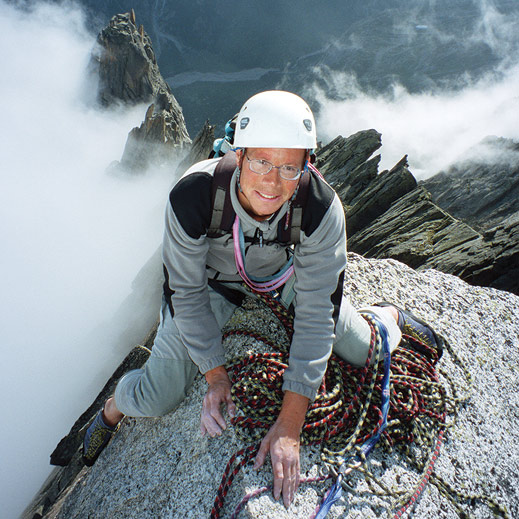Bruce Normand, PhD ’93
Pushing the limits in physics and mountaineering.
Bruce Normand is passionate about both physics and mountain climbing. In his view, these two interests share an important theme—pursuing problems with no known solution. “You’re always looking for a new problem—something beyond a textbook or guidebook,” he says. “You don’t need to follow someone else’s route. You can create your own.”
Originally from Scotland, Normand did his undergraduate work in physics and theoretical physics at the University of Cambridge. He became interested in climbing during an MIT IAP course in 1989, and by graduation he had scaled New Hampshire’s Mount Washington, Mount Rainier, several Mexican volcanos, and Denali.
“I’ve climbed mountains all over the world,” he says. “And I’ve never seen worse than Mount Washington in February—negative 33° and 80-mile-per-hour winds. In the high mountains you wouldn’t dare go out. In New England, you just suck it up.”
This story is only available to subscribers.
Don’t settle for half the story.
Get paywall-free access to technology news for the here and now.
Subscribe now
Already a subscriber?
Sign in
You’ve read all your free stories.
MIT Technology Review provides an
intelligent and independent filter for the
flood of information about technology.
Subscribe now
Already a subscriber?
Sign in
Since leaving MIT, Normand has climbed in Bolivia, Peru, Nepal, Pakistan, India, China, and Tibet. In 2007, he became only the 260th person to climb K2, the second-highest mountain on Earth. In 2010, he and two teammates were awarded the Golden Ice Axe—the highest honor in mountain climbing—for their five-day ascent of Xuelian West, a 21,000-foot mountain in China’s remote Tian Shan range.
“Just like in physics, it’s the team that matters,” he says. “You don’t do much interesting research on your own, and you shouldn’t climb alone. You’re much stronger as a team.”
Normand has also traveled the globe as a physicist. He has held research positions at institutions in Tokyo; Zurich, Basel, and Fribourg, Switzerland; Augsburg, Germany; Bariloche, Argentina; and Beijing. Since 2011, he’s been a professor of physics at China’s Renmin University. His research focuses on theoretical condensed-matter physics, and he teaches his courses in English.
“English is the universal language of science,” he says. “But the currency is always ideas. Physics is…ultimately about chasing after an idea that’s completely right.”
Perhaps it’s no coincidence that Normand’s mountaineering hobby began at MIT. He says the Institute is populated by people intent on exceeding their limits.
“As far as cross-fertilization of ideas, MIT is far and away the best,” he says. “You are surrounded by an infectious attitude of excellence, of people pushing boundaries, which makes you want to push those boundaries yourself.”
